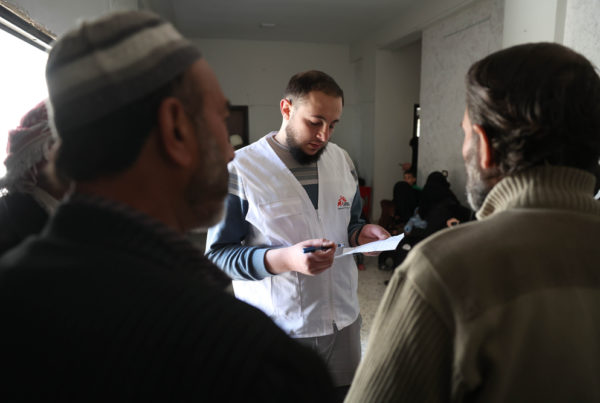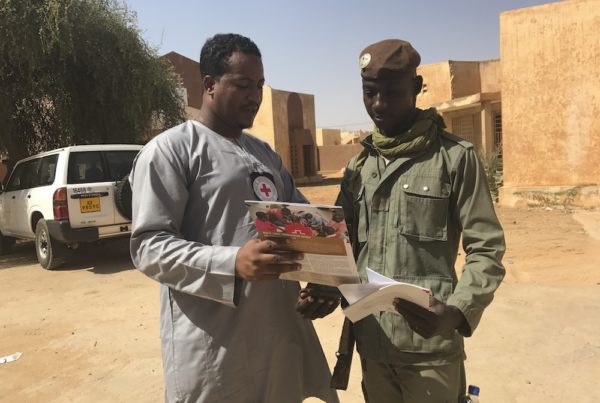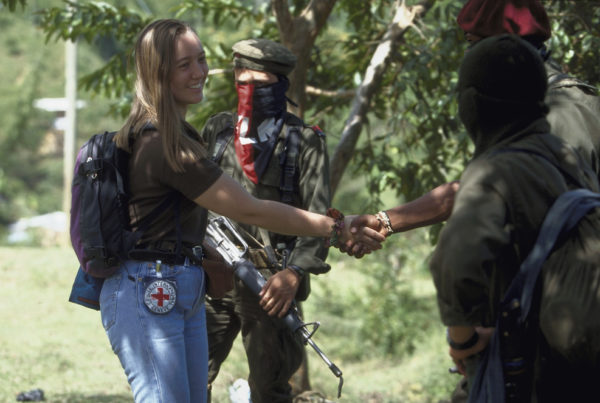
Over the last few years, humanitarian diplomacy has gradually evolved into a distinct field in the diplomatic domain.
Today, as crises multiply, it has become a key tool to advance humanitarian action.
At the Centre of Competence on Humanitarian Negotiation (CCHN), we researched the current state of humanitarian diplomacy.
Results show there are six steps that contribute to effective humanitarian diplomacy.
But first, what is humanitarian diplomacy?
Humanitarian diplomacy can be defined as advancing humanitarian interests and goals by leveraging diplomatic channels, such as embassies, Ministries of Foreign Affairs and government bodies, and regional and international organisations.
Humanitarian diplomacy practitioners – or humanitarian diplomats – use negotiation to persuade decision-makers and opinion leaders to act in the interests of vulnerable people while respecting humanitarian principles, international human rights law, and international humanitarian law.
Effective diplomacy involves building relationships, promoting dialogue, and seeking common ground to advance shared interests and values.
To achieve their goals, humanitarian diplomacy practitioners require fundamental negotiation skills, such as active listening, rapport building, and the ability to adapt.
In this sense, we can consider humanitarian diplomacy to be a form of humanitarian negotiation.
Now that we’re all on the same page, let’s get practical.

The research points towards six steps that contribute to effective humanitarian diplomacy.
Step 1: Define the problem and prioritise issues
To make your humanitarian diplomacy efforts effective, start by defining the issues at stake.
Then, filter out what can be addressed through frontline (field) negotiations and prioritise what requires diplomatic channels.
This will allow a more focused approach to the challenges and avoid overwhelming diplomatic platforms and State representatives.
You should consider humanitarian diplomacy when:
- Your organisation is stuck in negotiations and has tried everything in its power (including using the CCHN’s negotiation toolkit!), but there has been no resolution.
- Your organisation has no access to the primary decision-maker on the other side, or there are unmanageable risks in engaging those decision-makers (excluding issues that can be handled by Civil-Military coordination capacities).
- Your organisation has no leverage or influence over its counterparts or the decision-makers on the other side (government, conflict parties, etc.).

Step 2: Map relevant actors and stakeholders
Conducting a stakeholder mapping is essential to identify who might be blocking (or “spoiling”, in technical jargon) your negotiation and who could influence their position.
If you are mapping influential actors at a humanitarian diplomacy level, don’t forget to also consider:
- Relevant States and their representatives, on top of individuals and organisations.
- Different interests and influence levels within the same entity, as States and organisations are not always homogenous in structure or have unified interests.
- Analyse which actor is relevant to which priority issue (identified in step 1). The space to deploy humanitarian diplomacy tactics can be limited, and you should be strategic in choosing who to engage with and on what issue or challenge.
Step 3: Understand your counterpart’s needs and interests
To influence others, you must first make them feel heard.
To do that, you need to understand their interests and motives.
For instance, it’s crucial to understand the foundations of a State’s position and consider the values that could be behind it.
Are they worried about national security? Are they looking to convince voters?
Here is a non-extensive list of those interests and motives:
Step 4: Prioritise objectives and frame messages
Once you have identified and prioritised the issues at stake, mapped relevant actors, and analysed interests and motives, you should find the best way to present your objectives.
In other words, you should craft a compelling narrative.
Here’s how to do it:
- Language: Be clear, direct, and concise. Avoid ambiguity.
- Tone: Use a confident and authentic tone.
- Style: Be coherent and use key terms and ideas consistently. Stick to facts; emotional speeches are not conducive to changing policies and positions.
Here is another tip to consider when framing objectives and messages:

Step 5: Propose alternatives and Step 6: Develop your strategy
The last two steps to effective humanitarian diplomacy efforts require thinking creatively and putting all your work into a coherent strategy.
Often, it can feel like you have reached a dead end and there’s no way forward. Our next blog shows you how to come up with alternatives, even when you think there are none!
We also explores how to develop the right strategy for your engagement.
Remember…
Effective humanitarian diplomacy requires:
- Defining the problem and prioritising issues
- Mapping relevant actors and stakeholders
- Analysing interests and motives of individuals and states
- Defining objectives and framing messages
- Proposing alternatives
- Developing your strategy
These steps will allow you to build relationships, promote dialogue, and seek common ground to advance shared interests and values.
Good luck!




